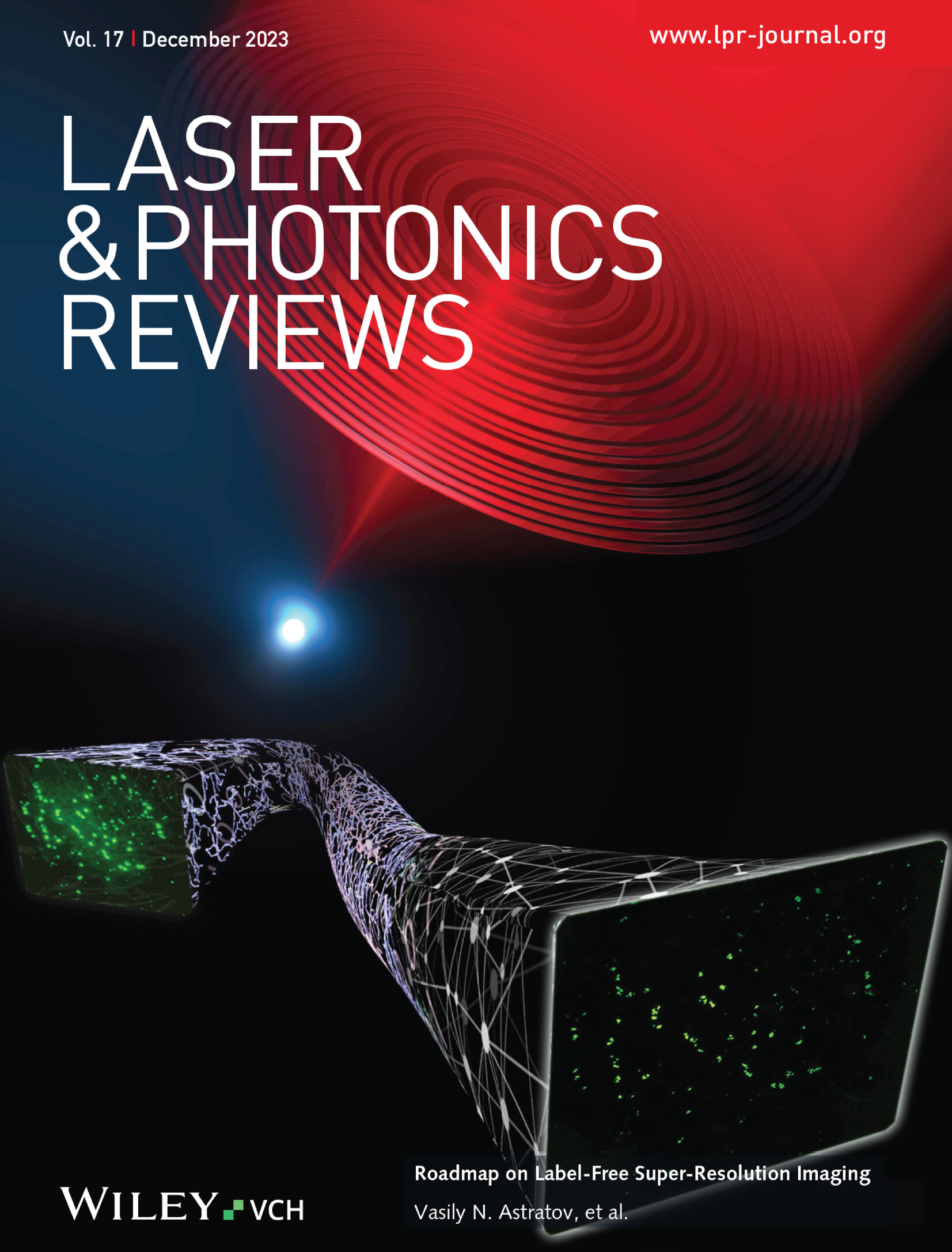Polarization Gratings Aided Common‐Path Hilbert Holotomography for Label‐Free Lipid Droplets Content Assay
IF 9.8
1区 物理与天体物理
Q1 OPTICS
引用次数: 0
Abstract
In this contribution a novel polarization gratings aided common‐path Hilbert holotomography (CP‐HHT) is presented for label‐free 3D refractive index imaging. Addressing limitations in current holotomography methods, the extended space‐bandwidth product is leveraged through robust phase demodulation using the Hilbert spiral transform. The application of polarization diffraction gratings in this system enables fully tailored holographic settings such as fringe density and shear, allowing flexible hologram demodulation, while maintaining simplicity and robustness. The performance is tested using 3D‐printed (fabricated with two‐photon polymerization) brain phantom and fixed HeLa cells supplemented with cholesterol and oleic acids. Reconstruction analysis using the brain phantom indicates that the Hilbert method provides improved spatial resolution to the Fourier transform method in a significantly expanded measurement information content. This CP‐HHT approach demonstrates the unique (not possible by fluorescence) ability to measure the lipid droplets enriched with cholesterol and oleic acid and highlights that they exhibit measurable differences in their refractive index values. These findings suggest that this method is sensitive to variations in neutral lipid content, offering promising insights into lipid droplet heterogeneity and supporting its potential for label‐free sub‐cellular bioimaging applications, thus reinforcing the versatility and applicability of this CP‐HHT system in broader bioimaging applications.偏振光栅辅助共程希尔伯特全息摄影用于无标签脂滴含量测定
在这篇文章中,提出了一种新的偏振光栅辅助共程希尔伯特全息成像(CP - HHT),用于无标签三维折射率成像。为了解决当前全息层析成像方法的局限性,利用希尔伯特螺旋变换的鲁棒相位解调来利用扩展的空间带宽乘积。偏振衍射光栅在该系统中的应用实现了完全定制的全息设置,如条纹密度和剪切,允许灵活的全息解调,同时保持简单和健壮性。使用3D打印(双光子聚合制造)脑幻影和添加胆固醇和油酸的固定HeLa细胞来测试性能。利用脑影的重建分析表明,Hilbert方法在显著扩展测量信息内容的情况下提供了傅里叶变换方法更高的空间分辨率。这种CP‐HHT方法展示了独特的(不可能通过荧光)测量富含胆固醇和油酸的脂滴的能力,并强调了它们在折射率值上表现出可测量的差异。这些发现表明,该方法对中性脂质含量的变化很敏感,为脂滴的异质性提供了有希望的见解,并支持其在无标签亚细胞生物成像应用中的潜力,从而加强了该CP - HHT系统在更广泛的生物成像应用中的多功能性和适用性。
本文章由计算机程序翻译,如有差异,请以英文原文为准。
求助全文
约1分钟内获得全文
求助全文
来源期刊
CiteScore
14.20
自引率
5.50%
发文量
314
审稿时长
2 months
期刊介绍:
Laser & Photonics Reviews is a reputable journal that publishes high-quality Reviews, original Research Articles, and Perspectives in the field of photonics and optics. It covers both theoretical and experimental aspects, including recent groundbreaking research, specific advancements, and innovative applications.
As evidence of its impact and recognition, Laser & Photonics Reviews boasts a remarkable 2022 Impact Factor of 11.0, according to the Journal Citation Reports from Clarivate Analytics (2023). Moreover, it holds impressive rankings in the InCites Journal Citation Reports: in 2021, it was ranked 6th out of 101 in the field of Optics, 15th out of 161 in Applied Physics, and 12th out of 69 in Condensed Matter Physics.
The journal uses the ISSN numbers 1863-8880 for print and 1863-8899 for online publications.

 求助内容:
求助内容: 应助结果提醒方式:
应助结果提醒方式:


